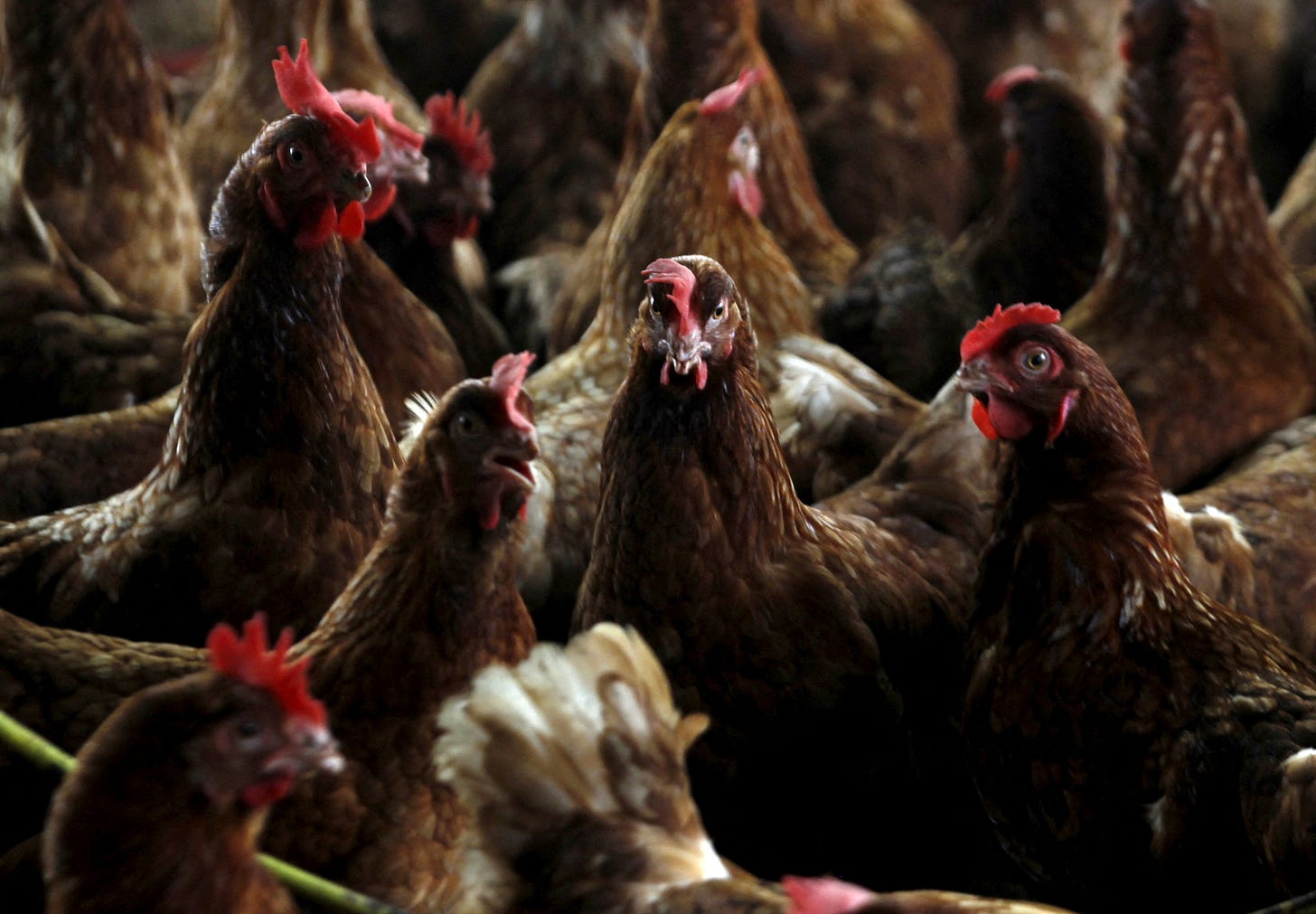How to Prevent a Bird Flu Pandemic
Leading virologist Angela Rasmussen breaks down everything you should know about the latest bird flu outbreak, including how worried Americans should be.
Public health crises often begin quietly. The world learned of the COVID-19 pandemic through an unassuming announcement by an outbreak alert service called ProMED-Mail of “pneumonia of unknown etiology.” Similarly, late last March, the Texas Animal Health Commission released a relatively bland memo announcing that H5N1 highly pathogenic avian influenza – better known as “bird flu” – had been detected in dairy cows from four herds in Texas and Kansas. The first detection in cows was an unwelcome surprise, since influenza A viruses were not thought to infect cattle. However, the risk to humans was judged to be low. Within a week, an infected dairy worker was identified.
In the year since then, there have been more than 70 detected human cases in the US – though that number is expected to be a vast undercount. Dairy herds have been infected in 16 states, and new outbreaks occur at poultry farms with increasing frequency. Egg prices have soared. Cats have died from consuming infected raw milk and contaminated meat. Multiple species of wild animals, ranging from penguins to seals to bears, have been found dead from H5N1 infections.
For virologists like me, the situation is deeply alarming. Although there has never been an H5N1 outbreak driven by human-to-human transmission, the scale of infection is unprecedented. There has never been an outbreak where so much H5N1 was infecting so many different species, particularly mammals that are so economically and agriculturally important and live in such close proximity to people. While we can’t say with certainty that H5N1 will evolve into a pandemic virus, the risk increases with each new H5N1 infection.
US health officials in the Biden administration mustered a lackadaisical response that, at its best, could be characterized by half-measures applied too little, too late. Outbreak responses led by Robert F. Kennedy Jr., the insidious and massively successful anti-vaxxer and President Donald Trump’s nominee for Health and Human Services Secretary, will, at best, be even less engaged and, at worst, may actually hasten spread in humans. As a result, we may bear witness to a pandemic emerging after more than a year of opportunities for the virus to adapt to human hosts.
Here’s what you need to know about H5N1, and what we can do to prevent a bird flu pandemic:
What is the H5N1 bird flu?
H5N1 is an influenza A virus, much like the seasonal influenza viruses that circulate in the human population every year. Although H5N1 is considered a highly pathogenic avian influenza virus – meaning it causes severe disease in birds and normally circulates in bird populations – “bird flu” does not only infect birds. The first human case was detected in 1997. Since then, outbreaks in humans have coincided with outbreaks in birds. Although it is considered a potential pandemic pathogen, H5N1 does not transmit efficiently between people. However, H5N1 has not had the sheer number of opportunities to adapt to humans like it does now.

H5N1 has caused an ongoing panzootic (a pandemic in animals) in birds since 2021 that has devastated wild bird populations and poultry production around the world. This virus appears particularly adept at infecting mammals and has wreaked havoc on every continent except Australia. Hundreds of infected dead seals have washed up on beaches in North and South America; seabird populations have been devastated; explosive outbreaks have impacted foxes and minks on fur farms in Europe; and vulnerable or endangered species, including Antarctic penguins, have suffered severe population losses. And then there are the dairy cows in the US.


